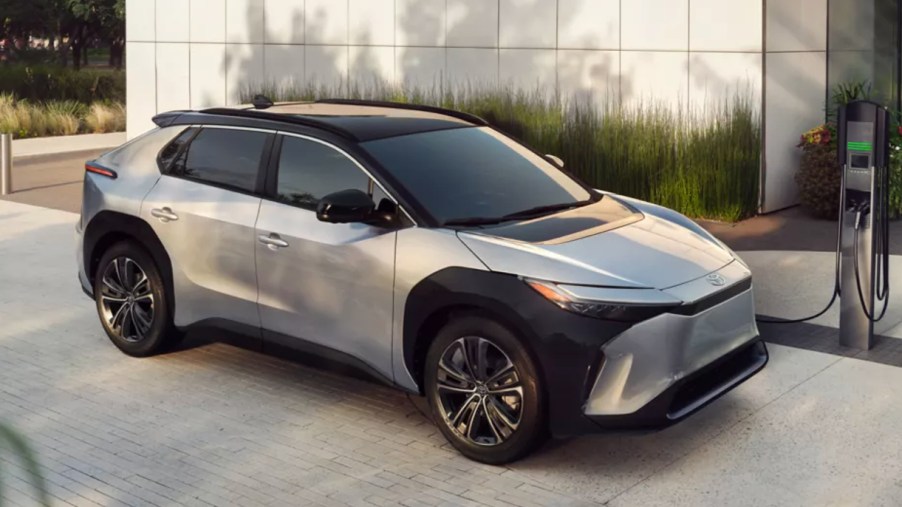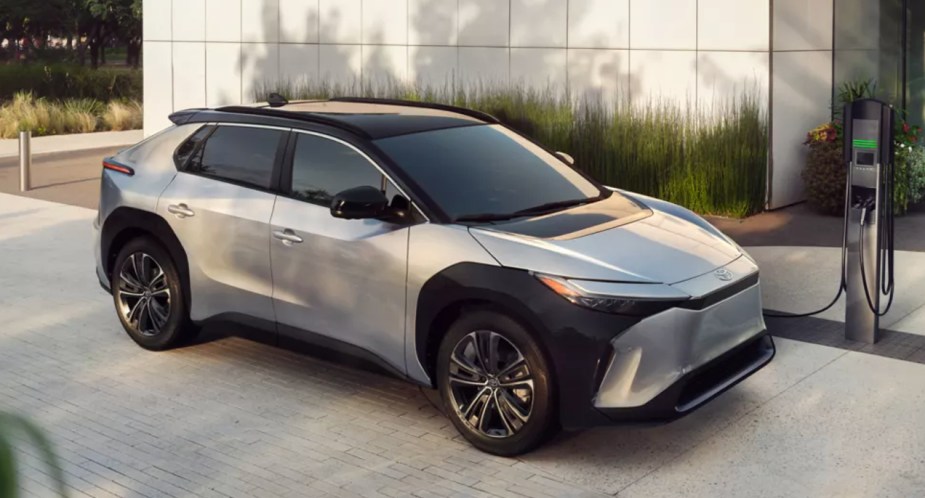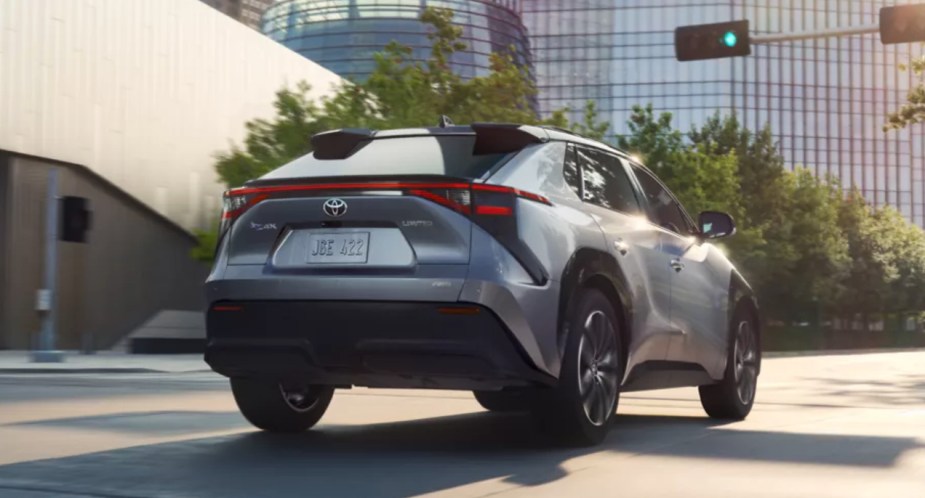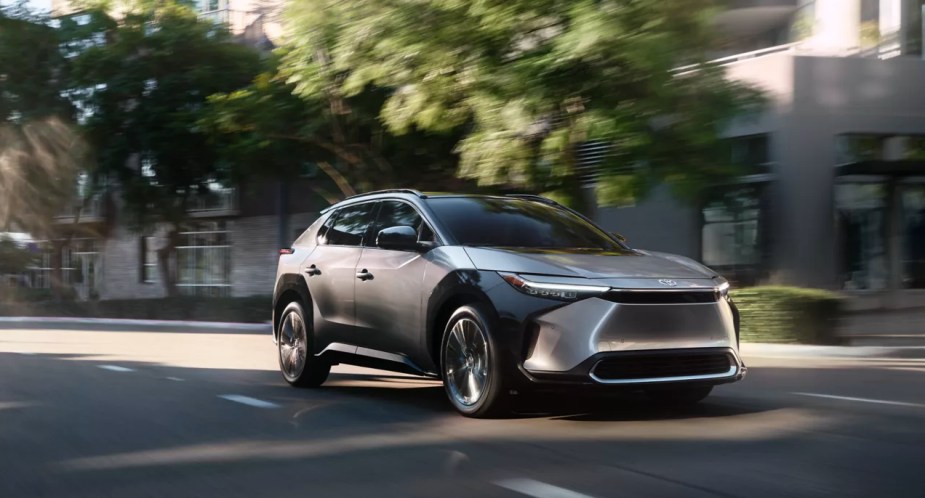
3 Reasons the Toyota bZ4X Electric SUV Is Underwhelming
Automotive fans had high hopes for Toyota’s latest electric SUV model. Unfortunately for both Toyota and consumers, the bZ4X hasn’t met expectations. The electric SUV has fallen short in more ways than one. Let’s unpack why the new Japanese electric SUV is so underwhelming.
The Toyota bZ4X isn’t the affordable electric vehicle that many consumers expected

Affordability is a strong suit of many popular Toyota SUVs. The Toyota RAV4 is the most popular Toyota model because it is both affordable and practical. The RAV4 is also reliable. The bZ4X is its own model, but many consumers assumed that the new electric SUV would share traits with its ancestor since the SUVs are so similar in size.
The RAV4 sells extremely well for the Japanese automaker, so why not just electrify the popular nameplate and call it day? The problem is, Toyota already tried electrifying the RAV4 nameplate with the help of Tesla Motors. The result was the RAV4 EV, a failed electric SUV that had 103 miles of driving range.
Toyota knew it had to try something different with the bZ4X. In many ways, design elements of the bZ4X exceeded expectations. On the other hand, pricing is questionable, to say the least. The bZ4X starts at $42,000. This isn’t an outrageous price, but the bZ4X doesn’t boast any impressive performance specs to justify a price this high. Furthermore, Toyota is losing its federal electric vehicle tax credit eligibility.
This means that the bZ4X will no longer benefit from the full $7,500 tax incentive. Instead, consumers can only claim $3,750 of the incentive. This means that consumers are paying close to $38,250 for a bZ4X base model. That’s thousands of dollars higher than the prices of rivals that are still eligible for the incentive, like the popular Hyundai Ioniq 5.
The Toyota bZ4X can’t go the distance

Range anxiety is a huge issue in the world of electric vehicles. Some consumers avoid EVs because they are afraid that these models don’t have practical driving ranges. Many American drivers believe that buying an electric vehicle means constantly having to wonder whether you’ll make it to your destination or not without your vehicle becoming immobile on the way.
Many automakers have soothed range anxiety by offering EVs with competitive driving ranges. The Ioniq 5 Limited has 303 miles of driving range. The Ford Mustang Mach-E California Route 1 has 305 miles of driving range. The bZ4X maxes out at just 252 miles of range. It can hardly go the distance compared to other electric SUVs.
The bZ4X isn’t as fun to drive as other electric SUVs

Car and Driver claims that the bZ4X isn’t as fun as some of its rivals on the road. The Hyundai Ioniq 5, Kia EV6, Ford Mustang Mach-E, and Tesla Model Y all have more exciting driving dynamics than the Toyota bZ4X.
The Toyota bZ4X has a maximum power output of just 214 horses. The RAV4 Prime PHEV has much more giddyup than Toyota’s electric SUV. The Toyota bZ4X just doesn’t accelerate as quickly as popular electric SUVs, and that doesn’t do the model any favors.
Read more about the Toyota bZ4X in the next article below.
RELATED: The 2023 Toyota bZ4X Comes With 1 Incredible Advantage



